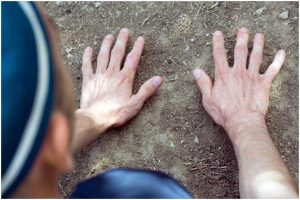HOW TO DO TAYAMMUM AND WHEN IT’S NECESSARY

Tayammum, or dry ablution, is a beautiful example of Islam’s practicality and compassion. It allows Muslims to maintain spiritual purity and perform acts of worship when water is unavailable or cannot be used. The word Tayammum comes from the Arabic root meaning “to intend” or “to aim.” It is a substitute for wudu (ablution) or ghusl (ritual bath), using clean earth as a means of purification.
This practice reflects Allah’s mercy and understanding of human limitations. As mentioned in the Qur’an:
“If you do not find water, then perform Tayammum using clean earth and wipe your faces and hands with it.”
(Al-Ma’idah: 6)
This article explains when Tayammum becomes necessary and provides a step-by-step guide on how to perform it properly.
CONDITIONS THAT MAKE TAYAMMUM PERMISSIBLE
Tayammum is allowed under specific circumstances, especially when water cannot be used due to genuine reasons. The two primary conditions are:
1. Absence of Water
If someone is in a location where water is not available—such as remote areas with no access to a water source within approximately one mile—then Tayammum is allowed. Even if water exists (like a well), but cannot be accessed due to danger (e.g., a wild animal or enemy control), it is considered as if water is unavailable.
2. Illness or Inability to Use Water
If water is available but using it could cause harm—such as worsening an illness, damaging a body part, or delaying recovery—then Tayammum is permissible. This also applies to someone physically unable to perform wudu or ghusl and who lacks assistance.
HOW TO DO TAYAMMUM: STEP-BY-STEP GUIDE
Performing Tayammum is simple and spiritually rewarding. Here’s how to do it:
1.Make the Intention (Niyyah):
Intend in your heart that you are performing Tayammum to purify yourself for prayer.
2.Strike the Earth:
Lightly strike both hands on clean earth, sand, dust, or a natural stone. Shake or blow off excess dust.
3.Wipe the Face:
Use both hands to wipe your entire face once.
4.Wipe the Hands and Arms:
Strike the earth again with both hands. Wipe both hands and arms up to the elbows, making sure to cover all areas and interlace the fingers.
Tayammum has two obligatory actions: (1) Wiping the face after striking the earth, and (2) Wiping both arms including elbows after striking again.
OBLIGATORY ACTS (WAJIB) OF TAYAMMUM
1.Intention (niyyah) must be made.
2.Hands and arms must be completely wiped.
3.At least three fingers must be used while wiping.
4.Tayammum must be done using clean earth or related material (e.g., dust, rock).
5.The surface must be pure and clean.
6.Tayammum is valid only when water is absent or cannot be used for a valid reason.
SUNNAH ACTS OF TAYAMMUM
1.Say Bismillah before beginning.
2.Strike the earth with both palms.
3.Move the hands forward on the earth after the strike.
4.Strike again and move hands back.
5.Shake off any excess dust.
6.Spread fingers when striking.
7.Follow the steps in proper order.
8.Perform the steps consecutively without unnecessary delay.
Knowing the Sunnahs helps ensure your Tayammum is performed with excellence and completeness.
WHAT INVALIDATES TAYAMMUM?
1.Anything that breaks wudu also breaks Tayammum (e.g., using the bathroom, passing gas, etc.).
2.Gaining access to water or regaining the ability to use water renders Tayammum invalid.
CONCLUSION
Tayammum is a powerful symbol of Islam’s compassion and flexibility. It ensures that no believer is left without a way to purify themselves, regardless of their circumstances. Whether you are traveling, ill, or without access to water, knowing how to do Tayammum allows you to remain spiritually clean and ready for worship.
By understanding and applying this beautiful practice, Muslims can fulfill their religious obligations with peace of mind, even when facing life’s many challenges.

